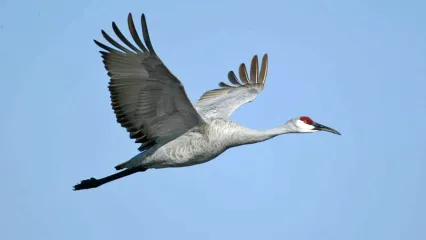
Description
The Eastern screech owl (Otus asia) is a small, nocturnal, woodland owl. There are two color variations- gray and a reddish-brown. Eastern screech owls are often confused with Western screech owls. One way to tell the difference is the bill color; the Eastern screech owl has a grey-green bill while the Western has a black bill. They can also be distinguished by their different call , and only occur together locally in eastern Colorado and southern Texas.
Eastern screech owls fly with a fast, steady wing beat (about five strokes per second). They rarely glide or hover, but may fly with erratic movements when maneuvering through wooded areas. When threatened, an Eastern screech owl will stretch its body and tighten its feathers in order to look like a branch to avoid detection. The male's most common call is an eerie, mellow muted trill given during the mating and nesting seasons. Each call lasts two to three seconds with about 35 notes given, at various intervals. When in the nest young adults give a whinny call instead of the normal call. The female Eastern screech owl tends to bark or hoot when sitting on the nest. Screech owls do not call when in flight unless they are alarmed.
Some of the screech owl 's predators include great horned owls, raccoons, snakes and crows. Eastern screech owls occur throughout Oklahoma except for Cimarron County. Screech owls are a unique part of Oklahoma's fauna and if you 're fortunate enough to see one of these small, interesting owls, count yourself lucky.
Size
Weighing only seven ounces, screech owls are the smallest owls in Oklahoma. They are about nine inches tall with a wing span of only 20 inches.
Habitat
Eastern screech owls hunt from dusk to dawn. They do most of their hunting the first four hours of darkness. The Eastern screech owl hunts mainly in flight instead of from the perch. They hunt mostly open wood lands, along tree row edges and wetlands. When prey is spotted they swoop down and grab the prey with their talons. They also catch flying insects on the wing. Small prey is swallowed whole on the spot; larger prey is carried back to the perch and torn into pieces. They hunt a wide variety of prey, including large flying insects such as locusts, moths, and dragonflies, and small song birds. But a screech owl's most dependable food sources are deer mice and other small rodents.
Life Cycle
During the spring breeding season, males approach the females by bobbing their heads up and down and winking at the females. If the female accepts the male they will be paired for life unless one of the owls dies. Screech owls nest in tree cavities usually six to 20 feet above the ground. They lay three to five eggs on average, and the incubation period will lasts 26 to 31 days. Eastern screech owls have been known to live up to 20 years in captivity.


